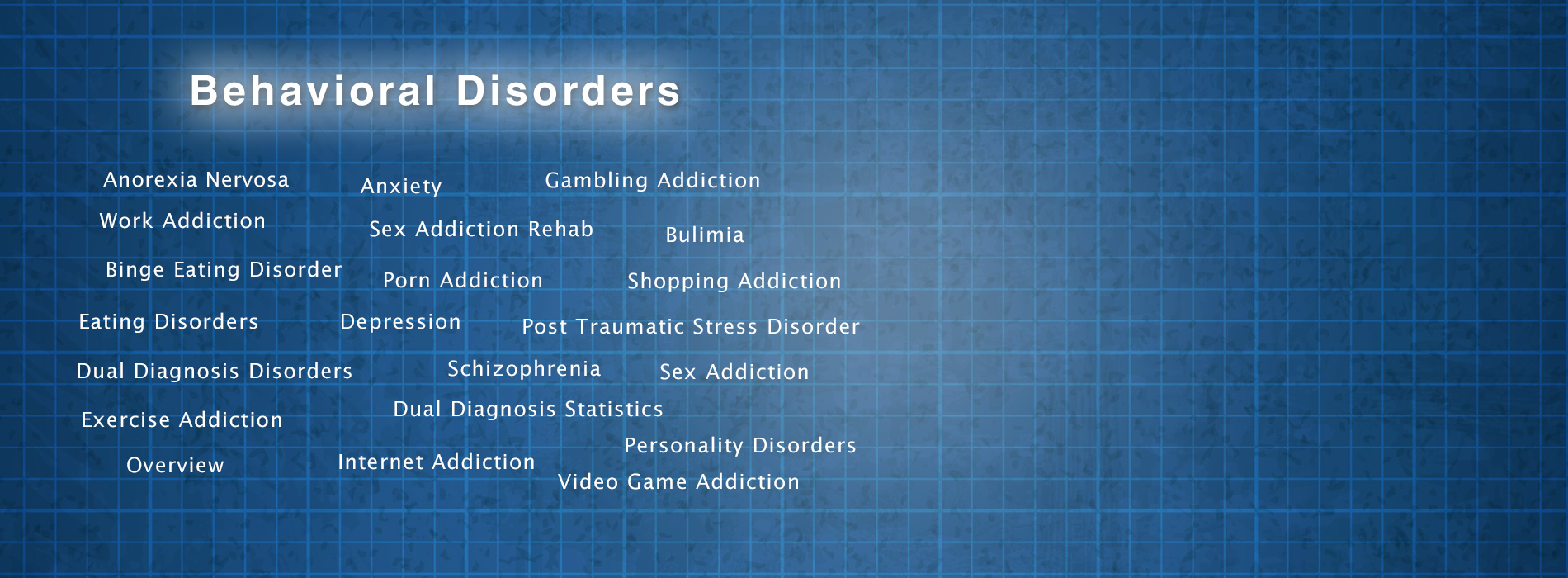Behavioral Disorders – Overview
Behavior disorders are a set of disorders that affect both children and adults and cause mental, emotional, or social upset that manifest themselves in behavior. Behavior disorders are characterized by actions that are not appropriate for the subject’s age. These disorders fall into several categories.
Anxiety disorders
This category includes several disorders, all of which involve excessive fear or anxiety that is detrimental to the person’s normal functioning. Separation anxiety is common in children, in which they feel excessive anxiety about being separated from caregivers or the home. In generalized anxiety disorder (GAD), the individual experiences a heightened sense of anxiety throughout most of their day. GAD sufferers perform “scanning” by constantly surveying their surroundings in a hyper-aware state of worry, even if there is not a source of their anxiety. Panic disorder is characterized by panic attacks – fits of acute anxiety that cause serious bodily symptoms, such as shortness of breath and dizziness. A fear or anxiety of certain specific objects or situations, such as heights or social situations, is called a phobia. Obsessive Compulsive Disorder (OCD) is characterized as an anxiety disorder, as it involves anxiety that motivates the compulsive actions.
Disruptive behavioral disorders
Disruptive behavioral disorders involve “acting out” with aggression, defiance of authority, stealing, or other behaviors. While some symptoms of disruptive behavior disorders may overlap with ADD or ADHD symptoms, they are considered separate from each other. Oppositional defiant disorder (ODD) is characterized by excessive arguing, defiance, anger, or vindictiveness in children. Children with ODD deliberately annoy or argue with others, defy authority, have a short temper, and blame others for their actions. Conduct disorder (CD) is more severe than ODD and includes behavior that repeatedly infringes on the rights of others and displays a lack of empathy. Conduct disorder can evolve into anti-social personality disorder once the individual turns 18. While children may exhibit some of these symptoms some of the time, they must be persistent and interfere with the child’s home and school life to be considered clinical.
Dissociative disorders
Dissociative disorders involve disruptions of self, memory, or awareness. Dissociative amnesia is where a person loses the memory of a specific event due to stress or trauma. This is sometimes called “repressing” a memory. A fugue state, now called dissociative fugue, is an episode characterized by amnesia of identity, in which a person forgets who they are. These can last for short or long periods of time. Depersonalization disorder involves bouts of dissociation of self or surroundings where the person may feel that the events occurring aren’t real. This may or may not involve an “out of body” experience, in which the person feels removed from their own body as if they are an observer. Dissociative identity disorder, formerly known as “multiple personalities”, is where the individual’s identity is fractured into at least two distinct, regularly occurring personalities.
Mood Disorders
Mood disorders involve disturbances in mood that occur over an extended period of time and are not related to current stress or trauma. They may be induced by the chemical effects of drugs or alcohol, but more often arise from a combination of genetic and environmental factors. Depression is an emotional disorder characterized by persistent low mood, while bipolar disorder involves abnormally cycling between low (depression) and high (mania) mood. Mood disorders should be treated by a professional therapist or psychologist, who may prescribe medication in addition to ongoing therapy to treat the disorder.
Pervasive developmental disorders
Pervasive developmental disorders are a group of disorders that involve delays in development of basic functions, such as social and communication skills. The most common member of this category is autism spectrum disorder, which varies significantly in its severity. These disorders all involve difficulty with communication, regulating emotions, and changing tasks. Childhood disintegrative disorder, a rarer, more severe pervasive developmental disorder, is a late onset of developmental problems involving communication, motor function, and social skills and may involve hallucinations. This category of disorders is thought to be genetic, but a direct cause has yet to be found. Despite significant controversy, there is no link between pervasive developmental disorders such as autism and childhood vaccinations.

